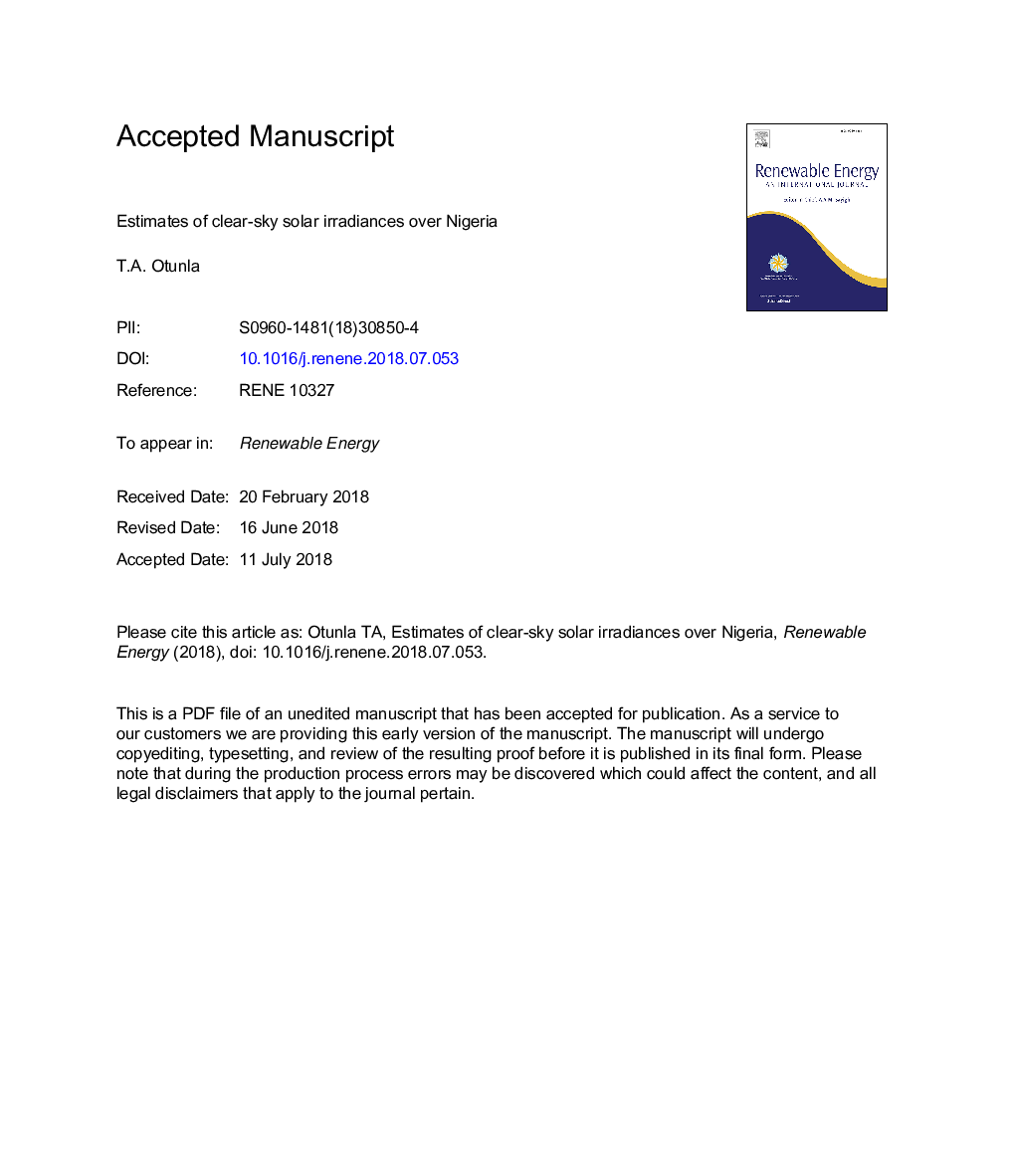| Article ID | Journal | Published Year | Pages | File Type |
|---|---|---|---|---|
| 6763685 | Renewable Energy | 2019 | 33 Pages |
Abstract
The biases in the Ebn estimates with NASA datasets across Nigeria (11-25%) are of similar magnitudes with NASA observations with ground measurements. The estimates show persistent negative biases that increased from tropical savannah to semi-arid climate zones (â8 to â24%). The bias in the Ed estimates is only of similar magnitude with NASA in semi-arid climate zone (10%). The Ed estimates show persistent negative biases that increase from semi-arid to tropical savannah across Nigeria (â7 to â54%). Also, the estimates in each climate zone correspond to the expected climatology of water vapour, aerosol turbidity and absolute optical mass. Lastly, the response of Ebn to water vapour absorption and aerosol extinction signals is mostly active in monsoon zone while the response to the signals by Ed are active in all the zones.
Keywords
Related Topics
Physical Sciences and Engineering
Energy
Renewable Energy, Sustainability and the Environment
Authors
T.A. Otunla,
